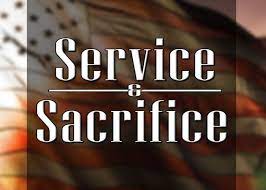By Nicole Asbury WP May 12 2022

Montgomery County’s new superintendent of schools will be paid an annual base salary of $320,000 — making her one of Maryland’s top-paid school leaders.
The four-year contract approved Tuesday by the school district’s Board of Education was the final step to officially hire Monifa B. McKnight as superintendent. Her appointment was approved by State Superintendent of Schools Mohammed Choudhury before her contract was finalized, pursuant to Maryland law.
She was appointed unanimously by the board in February. She will be the first Black woman to the serve as superintendent over Maryland’s largest school system. Her contract officially begins July 1.
Montgomery County votes to hire its first Black woman as superintendent
“Dr. McKnight is an exceptionally skilled leader who will build on our district’s legacy of excellence, and help us ensure that we are an innovative and equitable school system that provides a world-class education to all of our students,” Brenda Wolff, the board’s president, said in a statement.
The contract released Tuesday requires McKnight to relocate to Montgomery County as soon as possible but no later than June 30, 2023. The board will pay up to $15,000 in relocation costs. Her family currently resides in Prince George’s County.
McKnight’s contract further stipulates she will receive 30 days of paid annual leave and 25 sick or personal leave days. It also includes perks, such as the use a vehicle paid for by the board. She will also receive $48,000 a year in deferred compensation.
Additionally, McKnight’s salary is set to increase at a percentage equal to any increases given to the Montgomery County Association of Administrators and Principals, the union for administrators.
Each year, McKnight will be evaluated by the board no later than Nov. 1. She is expected to provide a self-evaluation before the board conducts its review, under the contract’s terms.
Her contract is set to expire June 30, 2026. Board members will decide by Dec. 1, 2025, whether they will renew it.
McKnight has been part of the school system’s leadership throughout the pandemic as schools grapple with historic student learning loss and a youth mental health crisis. In her time as interim chief, her administration coronavirus response has drawn criticism, with the omicron variant causing cases to surge around the time of winter break. McKnight apologized for problems in communication about changing coronavirus guidelines and other scheduling challenges.
She pledged in a statement Tuesday to focus on rebuilding trust and support students’ mental health and wellness. She added that she would collaborate with parents and teachers “to expand opportunity so that our students are college, career and community ready.”
‘A cry for help’: CDC warns of a steep decline in teen mental health
McKnight has worked in Montgomery County for two decades. She previously worked as deputy superintendent of education for the district, where she helped oversee the creation of the school system’s anti-racist audit, with a report scheduled for release in June.
She has served as interim superintendent since June. Her predecessor, Jack R. Smith, stepped down less than a year into his second four-year contract, citing medical issues with a grandson that resulted in a move to be with his daughter’s family in Maine. Smith was scheduled to receive $315,000 in base pay during his second contract, which would have made him, at the time, one of the highest-paid Maryland superintendents. He turned down the pay increase at the time while the district struggled with the financial effects of the pandemic, according to media reports, and retired with a salary of $295,000.
Few Maryland superintendents have reached a salary above $300,000. According to data provided to the Maryland State Board of Education for the 2021-2022 academic year, Baltimore City’s superintendent had the highest listed salary, at $333,125. Prince George’s County’s chief executive was the second-highest, at $317,288. Anne Arundel’s superintendent fell just short of the $300,000 threshold for the academic year, with a salary of $299,910.
With 209 schools, Montgomery County is among the nation’s largest school systems, with an operating budget of roughly $2.9 billion. Its student body is 33 percent Hispanic, 25 percent White, 22 percent Black, 14 percent Asian and 5 percent multiracial.
Also on Tuesday, the board approved a set of agreements with union leaders that would boost teacher pay by 3.35 percent, effective Dec. 17. The raise is a cost-of-living increase, and it will be paired with a “salary step increase,” that will combine to a more than 6 percent raise, McKnight said.
It’s the highest compensation increase educators have received in a decade, McKnight told the board.
Wolff, the board’s president, said the increase was well-deserved, as teachers, administrators and staffers “have been true heroes during this time of the pandemic.”
“Over the last two years, we can’t thank them enough for everything they’ve done,” Wolff said.
Jennifer Martin, president of the Montgomery County Education Association, the county’s teachers union, said in a statement Tuesday the agreements were “a step in the right direction,” but more work had to be done to retain instructors. Several have retired or resigned in the past year, she said.
“More must be done to make public education a viable and appealing career choice for both new and veteran educators,” Martin said.





















